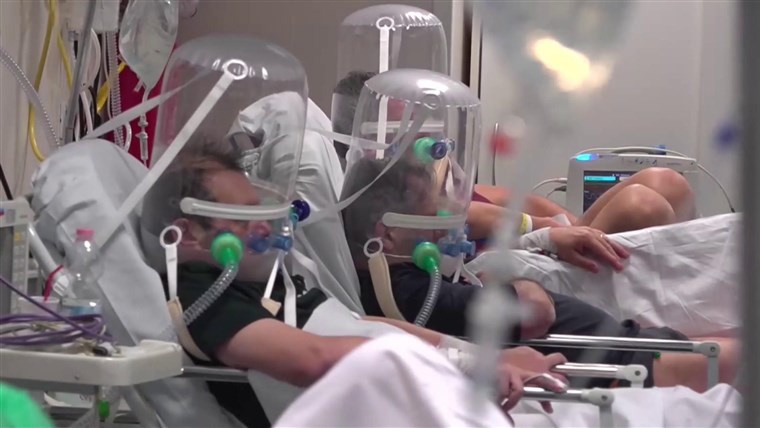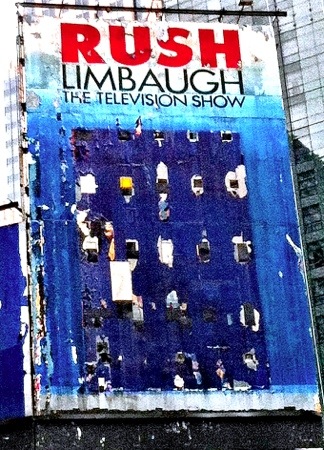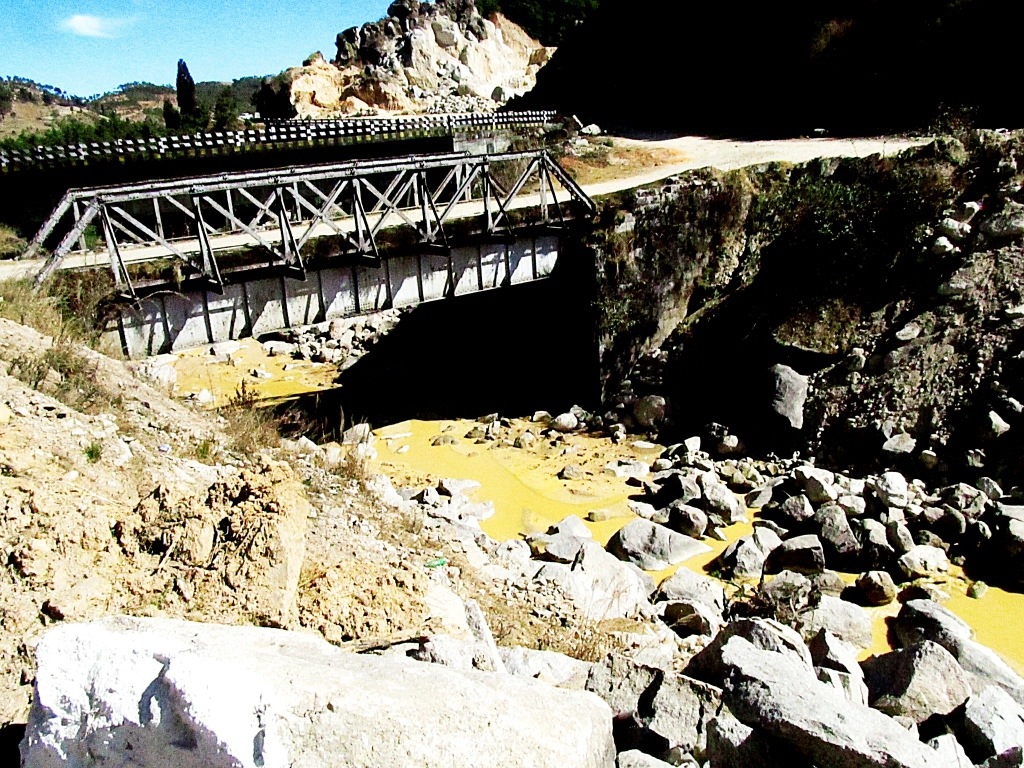
Seen from the screen of an electron microscope, coronaviruses are a single strand of RNA surrounded by a fatty outer envelope and contained in a crown of spiky hazard. Like Velcro, they are perfectly designed to latch onto host cells and inject genetic instructions that so confuse the cells that they produce more virus to infect more cells to produce more virus.
Typically the consequence of a corona virus attack is an illness familiar to everyone. Coronaviruses cause the common cold.
But the coronavirus is a wild, unpredictable organism. It is capable of adjusting its genetic software and shape-shifting to produce more serious diseases like pneumonia and bronchitis. And just as scientists learned in 2003 during the SARS outbreak in China, with the MERS epidemic in 2012, and again in 2019 with the Covid-19 pandemic, a different tweak of that RNA strand will transform a pathogen that normally causes a seven-day cold into a global killer.
That’s what Chinese medical authorities started to worry about when the novel coronavirus made its presence known late last year. Exactly when the virus appeared has not been precisely identified. Chinese government data made public by the South China Morning Post indicates that the first cases of Covid-19 emerged in Hubei Province, where Wuhan is the capital city, as early as November 17, 2019.
On March 27, as global cases closed in on 600,000 and deaths neared 25,000, with over 2,000 of those deaths in the U.S., President Trump signed the $2.2 trillion economic package to save jobs and businesses and impede an American economic depression.
Between those two dates, the start of the pandemic and the most expensive single statute ever passed by Congress, lies political and diplomatic terrain commanded by the world’s two most powerful nations. It is a landscape of fierce rivalries, missed opportunities, and gross mismanagement that hindered the virus’s containment in China, the United States, and around the world.
Suspicious of each other over trade and other differences, and working at cross purposes through the start of 2020, authorities in China and the United States committed the most grievous villainy in managing a deadly disease. They misled their citizens about how fast the virus could spread and how lethal it could be.
The novel coronavirus put an end to that treachery. Silent, highly contagious, and murderous, its manifestation as the Covid-19 disease erupted into a global pandemic and forced an uninvited reckoning. On Sunday evening, March 29, just 31 days after he accused Democrats of politicizing Covid-19, saying it was “their new hoax,” President Trump said this about the potential that the virus will kill an astronomical number of Americans: “So we have between 100- and 200,000 — we all, together, have done a very good job.”
The Start
Every story has a beginning, which is the purpose of this account of the first weeks of the Covid-19 era. It is based on dates, data points, and quotes gathered from news organizations, scientific and medical journals, universities and government agencies.
How and why the virus marauded across America will be uncovered with greater precision in the formal federal hearings and commission investigations that are certain to come. But from the vantage of this journalist, who’s reported on ecological and industrial disasters on five continents, and studied the virus and its consequences, a number of conclusions are apparent. This report is meant to help people gain greater clarity about what happened and provide some explanation for the causes.
Here are a handful of significant findings:
— Chinese authorities, who had hidden the dangers of the SARS virus in 2002 — which killed 774 people around the world — did the same thing with the coronavirus. On January 1, as the number of cases began to multiply, China was desperate to keep information secret. Chinese police detained eight Wuhan doctors who, in the last days of December, took to social media to warn about illness from a new virus. The doctors were directed to immediately stop “sending rumors.”

— Chinese authorities did not accurately report the number of patients infected in the earliest days of the epidemic. On December 31, China alerted the World Health Organization’s China office that 59 people were hospitalized with a suspicious untreatable fever and dry cough. In fact, according to the South China Morning Post, the disease had been identified in 266 patients. Five days later, the virus had infected 425 people in Wuhan.
— From December 31 to January 17, China did not disclose any other coronavirus infections. Wuhan officials instead focused on convening a big and important Communist Party meeting scheduled to run from January 11 to January 17.
— Chinese authorities concluded incorrectly that the infection was not contagious from human to human. That assertion was put to rest on January 13 when authorities in Thailand reported that a case of Covid-19 had emerged in a traveler who had visited Wuhan. Two days later another Covid-19 case appeared in Japan.
— China rejected assistance from the U.S. Centers For Disease Control and Prevention and the World Health Organization, which were anxious to provide research and epidemiological assistance, and gain access to medical records and tissue samples to understand the virus’s behavior.
— One reason that China resisted being candid about the virus and not open to American assistance may have been the trade war with the United States. As the virus spread in China, and as American virologists and epidemiologists recognized the threat, the two nations were engaged in the frantic final days of negotiation of a trade pact that was finished on January 15.
— President Trump, as has been well documented, spent January and February dismissing the threat to the U.S. One explanation is that his attention was diverted by the two articles of impeachment approved by the House on December 18, 2019, and by the Senate impeachment trial that began on January 22, 2020.
— Federal doctors and epidemiologists were keenly aware of the expanding Covid-19 threat, as were lawmakers in the U.S. Senate, but were discouraged by the White House from publicly discussing their concerns.
As all of these breaches of responsibility occurred, the novel coronavirus eluded its containment in China like an NFL running back bulldozing a high school defense. On January 23 China locked down Wuhan and reported 800 cases and two dozen deaths. Days later it formally quarantined other major Chinese cities.
Too late. The first case in the United States had been confirmed in Seattle three days prior to China’s lockdown of Wuhan. Authorities in Japan, South Korea, and Thailand announced that the virus had also ruptured their boundaries. Researchers, joined by the global media, began the obsessive Covid-19 count of infections and deaths, aided by online real-time interactive graphic displays . From the first days, both vectors have headed straight up.
An Accounting in America
From the American perspective, several dates stand out. One is January 8, when the Centers for Disease Control and Prevention issued its first alert to American physicians to be on the look-out for patients with respiratory symptoms who had traveled to Wuhan. The alert makes clear that the principal epidemic-spotting agency in the U.S. government was aware and worried about Covid-19 from the earliest days of the outbreak.
Another is January 20. In the United States, five days after he returned to Seattle from Wuhan, an American traveler was tested for Covid-19. The positive result made him the first U.S. Covid-19 case. That same day in China, as 400 million people began to scatter to celebrate the Lunar New Year, Wuhan health authorities disclosed that the coronavirus was highly contagious. China announced that 450 people were infected, and 20 had died in Wuhan.
The spread of the pandemic, aided by its newness and severity, raced at biological warp speed inside and outside of China. On January 23, when China at last locked down Wuhan, it banned large gatherings and barred flights, train travel, and ferry traffic. At least 535 Covid-19 cases had also appeared in other nations. The U.S. State Department ordered all of its non-emergency personnel and their families to leave Wuhan.
The Wuhan shutdown prompted a cascade of dissonant responses in the United States. On January 24, the U.S. government started to screen passengers from Wuhan who arrived at five U.S. Airports. Trump, though, appeared unworried and expressed his gratitude for China’s “efforts and transparency†in combatting a virus that its leadership tried for weeks to cover up. On behalf of the American people, Trump wrote, “I want to thank President Xi!â€
Meanwhile on Capitol Hill, also on January 24, senior American health authorities, among them Dr. Anthony Fauci, the director of the National Institutes of Allergy and Infectious Diseases, delivered a private briefing about the epidemic to a roomful of U.S. senators. It’s not known what was said. The U.S. had just two cases then. But one of the lawmakers who attended, Georgia Republican Kelly Loeffler, dumped a bunch of stock.
In New York, stock traders were just as nervous as the newly appointed senator from Georgia. The New York Times started to cover the spread of Covid-19 on its front page on January 22. Dr. Nancy Messonier, director of the Center for the National Center for Immunization and Respiratory Diseases, was dispatched to issue this statement meant to instill calm but which rattled investors: “CDC believes that the immediate risk to the American public continues to be low at this time, but the situation continues to evolve rapidly.”
Dr. Howard Zucker, New York state’s health commissioner, also joined the calm-the-roiling-civic-seas chorus, “It’s not that we shouldn’t be concerned, but we should keep things in context,†he said. “The most important thing is that we’ve been here before, we’ve seen these challenges before. We’ve been able to identify them and work through them and we will do the same here as a collaborative effort on this task.â€
The Dow Jones Industrial Average lost 170 points that day anyhow, and the S&P 500 posted its worst day in three months.
Six days later, on January 30, the number of Americans with confirmed Covid-19 infections increased to 6 in four states, and the number in China approached 10,000 and over 200 deaths. Dr. Messonnier’s message that day grew more urgent. “We need to prepare as if this is a pandemic, but we hope it is not,” she said at a news conference. “The risk to Americans is low at this time but the threat is serious.”
U.S. airlines agreed. American, United, and Delta suspended flights to and from China. President Trump on January 31 made those suspensions an official flight ban order. Other countries were following suit. The first Covid-19 virus arrived in Italy, carried by a Chinese tourist, on January 31, prompting Italian authorities to suspend all flights between the two countries. That same day Spain confirmed its first case. The virus was spreading in South Korea, Japan, and across Southeast Asia.
Yet in the United States, neither Dr. Messonnier’s statement nor the travel ban appeared to resonate. Other than a single physician, no other senior government executive, and certainly not the president, had issued a clear warning. That week, a more visible news story in the United States took precedence — the week-long canonization of Kobe Bryant by the American sports media. Bryant, his daughter, and seven other people died in a helicopter accident in California on January 26.

By the start of February, though, Americans began to pay closer attention. China’s Covid-19 epidemic became the subject of heavy coverage by cable news in the United States and around the world. Some 14,300 had developed the infection in China and more than 20 other countries. The reported death toll stood at 304. The global economy was in retreat.
The U.S. government’s response seemed more engaged. On February 2, the State Department issued a Global Health Advisory warning Americans to avoid “all international travel.” That same day, the president said the January 31 flight ban was a smart decision. “Well, we pretty much shut it down coming in from China,” he said. “We can’t have thousands of people coming in who may have this problem, the coronavirus. So we’re gonna see what happens, but we did shut it down, yes.†The flight ban had big holes. It did not shut down travel by Chinese people who traveled to the U.S. from flights out of other countries.
Then things got weird between China and the United States, and in the American public health research agencies. On February 7, in a string of tweets, the president commended Xi Xinping as “strong, sharp and powerfully focused on leading the counterattack” against the virus and predicted the outcome would be “very successful.”
“He feels they are doing very well, even building hospitals in a matter of only days. Nothing is easy,” said Trump. “He will be successful, especially as the weather starts to warm & the virus hopefully becomes weaker, and then gone.”
But at the CDC, a promised Covid-19 test failed. State health authorities started complaining that they were being held up by the Food and Drug Administration for developing and using alternative tests. The virus was spreading in the U.S., but people were not being tested. Health authorities trying to manage infections were flying blind.
And for reasons that have not been explained, the Trump administration picked a fight with China. The State Department on February 18 declared that five Chinese media organizations working in the United States were “foreign missions.” The decision restricted the movements of Chinese journalists in Washington and initiated a return volley.
The next day China expelled three Wall Street Journal reporters. The feud escalated over the following two weeks as the Trump administration on March 2 decided to limit to 100 the number of Chinese citizens permitted to work in the United States for state-controlled Chinese news organizations. China followed that by promising to revoke the visas of American journalists reporting for the New York Times, the Washington Post, and the Wall Street Journal. Senior government officials of both nations accused each other of developing and spreading the virus.
The war of words and sanctions against Chinese and American journalists was the backdrop to the discord in politics, media, and markets developing in the United States. Inside the CDC and the National Institutes of Health, medical specialists were frantic with worry about a virus that was new to the human community that had no natural immunity. The virus was inside the United States and sickening people in different parts of the country. A microscopic terrorist was loose and capable of wreaking havoc if safeguards weren’t established immediately.
Their dread reached a peak on February 25 when Dr. Messonnier, until then the primary American public health spokesperson, delivered an accurate, unnerving, and courageous projection about what was occurring.
The consequences of the virus’s spread, she said, “may seem overwhelming and disruption to everyday life may be severe.†She added, “It’s not a question of if this will happen, but when this will happen, and how many people in this country will have severe illnesses.†She talked to her children about the virus that morning. “While I didn’t think they were at risk right now, we as a family ought to be preparing for significant disruption to our lives.â€
Her warning was not what the president wanted to hear. Just three days before Dr. Messonnier’s statement, the Dow Jones Industrial average had reached its all time peak of 29,551.42. The number of Covid-19 cases in the United States was still low, reaching 60 on February 26, the day of the first American death. President Trump, mindful of the economic disruption the virus was causing in China and the attention it was attracting in mainstream American media, sought through all of February to limit national anxiety.
Mr. Trump dismissed Dr. Messonnier from her post as a spokesperson and rebuked her warning with this statement on February 25: “You may ask about the coronavirus, which is very well under control in our country. We have very few people with it, and the people that have it are … getting better. They’re all getting better. … As far as what we’re doing with the new virus, I think that we’re doing a great job.â€
Media and the ‘Hoax’
Fox News and its allies in Trump-supporting media ardently supported the president and pursued a run of false and dangerous reporting about the danger of Covid-19. Fox News hosts opined that the Covid-19 threat was wildly exaggerated by mainstream media. They barked that any criticism of the president’s response to the virus amounted to a political smear, much like what happened to Trump with the Mueller investigation and impeachment.
On February 28, the president carried that message, in effect a political IED, into a rally in South Carolina and detonated it. Boom! He said that politicization of the virus was the Democrats’ “new hoax.” The audience erupted. Trump’s critics were horrified. His attack turned the virus into more than just another source of division and disruption. That word impeded people’s understanding of its danger.
If the coronavirus had a brain and a voice, the entire world would have heard it issue a low growl of contempt and disrespect. A president who relies on his gut and extravagant stroking by his aides to make decisions, completely missed the menace of an unseen, powerful, and merciless enemy. In March, just as Dr. Messonier predicted, the virus exploded across the country.
At this writing, the numbers are awful and rising. The virus has infected over 165,000 Americans in every state and killed nearly 3,200. The stock market tanked between its peak in February and its low on March 23, losing nearly 11,000 points and almost 40 percent of its value. Much of the American economy is shut down. Millions of Americans are out of work. Tens of millions of Americans are self-quarantining in their homes, emerging only for exercise and trips to the market. Shoppers hoarding toilet paper became an iconic image early in the month. Lines of stretchers supporting corpses in white shrouds became the new iconic image as the month nears its end.
Through all of it, President Trump demanded and commanded the center of attention, as he’s done throughout his presidency. Critics view his public appearances as alternately obstinate, ill-informed, stumbling, and confusing. His supporters view him as a resolute leader capable of adjusting strategy to changing conditions.
From my vantage, I saw a leader out of his depth and acting irrationally. “The Fake News Media and their partner, the Democrat Party, is doing everything within its semi-considerable power (it used to be greater!) to inflame the CoronaVirus situation, far beyond what the facts would warrant,” Trump tweeted on March 9. “Surgeon General, ‘The risk is low to the average American.’ â€
In marquee events he organized, the president appeared unsteady and unnecessarily antagonistic. In an Oval Office address on March 11, he suspended air travel from Europe and inflamed the rift with China. He called Covid-19 a “foreign” virus. The next day Zhao Lijian, a Chinese foreign ministry spokesman, accused the U.S. of developing and planning the microbial attack. “It might be US army who brought the epidemic to Wuhan,†sad Zhao, in a tweet. “Be transparent! Make public your data! US owe us an explanation!â€
On March 13, the president declared a national emergency — “two very big words.” The administration issued safety guidelines. Mayors and governors, both Republican and Democrat, signed orders to shut down non-essential businesses and convince people to stay home.
But on March 24, a day after the stock market dived to the lowest point of his administration, Trump abruptly changed course. He echoed Fox News commentators in insisting that the virus’s mortality rate was under 1 percent and “we can’t have the cure be worse than the problem.” Trump said the virus was no more dangerous than the common flu, a glaring factual lie, and announced his readiness to end his administration’s social distancing and self-quarantine guidelines. He said, “I’d love to have it open by Easter,” April 12.
If that reopening dateline had been executed, it would have been the most consequential and dangerous act of aggression against the American people in our history. It defied scientifically sound epidemiological projections, especially one published on March 16 by Imperial College of London. That study predicted that hundreds of thousands of Americans would die and American healthcare facilities would be overwhelmed if strict safety measures were not in place.
The last weekend in March turned out to be another turning point in the Covid-19 epic.
On March 26, a Thursday, the United States overtook China to lead the world in the number of Covid-19 cases. Late that evening Trump and Xi Xinping spent time on a call intended to end the bickering and mend relations. It worked, at least for the time being.
The Chinese leader offered China’s support in contending with Covid-19, according to an account by the Chinese foreign ministry. Xi Xinping also pushed back against Trump’s assertion that China had not been transparent about the epidemic. Xi pointed out that China’s tight restrictions on movement reduced the number of new cases to under 50 per day by mid-March, and all were from people bringing the virus into the country.
The assertion has raised doubts in China about its accuracy. President Trump appeared to accept it as the truth. “China has been through much & has developed a strong understanding of the Virus,†Trump said on Twitter. “We are working closely together. Much respect!â€
On Friday, March 27 Trump signed the $2.2 trillion economic rescue package. In a news conference later in the day, Trump was asked about opening the U.S. to business. Trump signaled he’d come to his senses.
“I’ll be sitting down with this brilliant woman and this brilliant man,” Trump said, nodding at Dr. Fauci and Dr. Deborah Birx, the coordinator for the White House Coronavirus Task Force. “We’ll be sitting down on Monday or maybe Tuesday, depending on which is the best for everybody, and we’ll be making that determination. Okay? We’ll be making it.”
Two days later, March 29, as a horrific tableau of disease and suffering revealed itself in New York, and as Dr. Fauci and his colleagues argued for greater safeguards, Trump decided to keep the containment guidelines in place until the end of April. With Americans in retreat in their homes, and millions out of work, Trump finally appeared to grasp in a public setting the severity of the crisis that had developed on his watch. He said that Covid-19 could kill an unthinkable number of Americans.
Trump’s supporters were wowed by his new candor. For me, what he said was appalling:
“Think of the number: 2.2 — potentially 2.2 million people if we did nothing,” Trump said. “If we didn’t do the distancing, if we didn’t do all of the things that we’re doing. And when you hear those numbers, you start to realize that with the kind of work we went through last week, with the $2.2 trillion, it no longer sounds like a lot, right?
“So you’re talking about — when I heard the number today — first time I’ve heard that number, because I’ve been asking the same question that some people have been asking — I felt even better about what we did last week with the $2.2 trillion, because you’re talking about a potential of up to 2.2 million. And some people said it could even be higher than that. So you’re talking about 2.2. million deaths — 2.2 million people from this.
“And so, if we can hold that down, as we’re saying, to 100,000 — that’s a horrible number — maybe even less, but to 100,000; so we have between 100- and 200,000 — we all, together, have done a very good job. But 2.2, up to 2.2 million deaths and maybe even beyond that.
“I’m feeling very good about what we did last week.”
— Keith Schneider



Well said, Keith. You did an excellent job of pulling together all of the facts and putting together a well-substantiated and very understandable timeline of the COVID 19 saga up to this point. Kudos to you. Looking forward to the next episode.
Thank you Keith, for this comprehensive timeline of the facts leading us up to where we are today. Keep giving us the facts, and stay safe and well, friend.
Lies have become the norm but liars put their health @ risk.
Thank you very much, Keith As we stand, rather shelter at home, confronting this menace with no cure, who knows what the landscape will look like in 6 weeks, 6 months, 6 years!
Will the development of all our technological prowess be for nought? Will we lose the best and the brightest of our wonderful medical personnel to this horrible spectre? How many in our families might we lose?
Thank you very much for your comprehensive reporting… perhaps now we will all understand the value of truth in reporting, in administering and in resolving all that besets us!